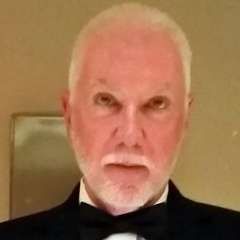The holiday concert series has drawn to a close and a new year has begun with the Atlanta Symphony Orchestra in a concert led by guest conductor Peter Oundjian (currently music director of the Toronto Symphony). He was last with the ASO exactly one year ago, leading a well-received concert.
As part of its recognition of the 100th anniversary of Leonard Bernstein’s birth, the ASO has scheduled several of his works throughout the year. It provides a great opportunity to hear and assess the works of the quintessential American composer, who, in recent years, is not heard quite as frequently as he once was. Bernstein’s strength was that he synthesized the cultural atmosphere of the time (including Pop music and Jazz) and applied the rigors of his musical genius to morph it into pieces for large orchestras. In contrast to other composers who delicately incorporated folk or Pop music into their works, Bernstein’s references are not subtle – he doesn’t just include themes or melodies – he adopts the energy, instrumentation, rhythms and colors of the popular culture. The Three Dance Variations from Fancy Free are good examples of the way in which this music, composed in 1944, is musically linked to the 1940s New York City zeitgeist. This, combined with his fairly limited orchestral palette, results in many pieces that often sound strikingly similar. The Dance Variations are bright, brassy, bold and rhythmically driven, but all too sonically familiar to anyone who has heard Bernstein’s other compositions. The Variations pieces were composed for the Ballet Theater and choreographer Jerome Robbins, and were the musical backdrop for three men competing to impress their female audience by each individually dancing a gallop, a waltz, and a danzon. Oundjian kept a brisk pace throughout the work and the ASO performed with enthusiasm, which ratcheted up the music’s already high energy
The 1880 Saint-Saëns Violin Concerto no. 3, here performed with soloist ASO concertmaster David Coucheron, is a work that highlights the strengths and weaknesses of the composer. Saint-Saëns, a popular figure in his time, composed the concerto at the request of Spanish violin wizard Pablo Sarasate, whom he first met in 1859. It would seem that Saint-Saëns had to deliver a work that would positively showcase the lyrical and technical talents of his friend, and that is indeed what he did. The first movement in sonata form, Allegro non troppo, is replete with rapid scales, arpeggios and double stops, all of which show off the soloist’s violin bona fides. There are two main themes, the first bold and dramatic and the second lyrical. While the music is lushly Romantic, it seems more a vehicle for impressing the listener with its technical demands for the violin rather than with its musical depth. The second movement, Andantino quasi allegretto, is a gorgeous barcarolle that eventually flows gracefully into interchanges between the orchestra and the woodwinds. This movement is balletic and would make for a great pas de deux. Its lyricism and transparent orchestration presage the French Impressionist style by some two decades. The final movement begins with a fanfare-like theme in the violin and it concludes with a brass-driven chorale. Oundjian paid great attention to the music’s dynamics and Coucheron played flawlessly.
The final work on the program was Beethoven’s Seventh Symphony. Oundjian, who conducted without a score, led a precise, tightly controlled performance that showcased the music’s wonderful thematic development and classic structure. Oundjian clearly left his mark on the ASO performances – they were tight and precise. He pays attention to detail but never loses the long arc of the music. For example, in the Beethoven, he used the thematic repetition to propel the music and, combined with his attention to dynamics, this made for an exciting performance of an often heard masterpiece. Oundjian and Coucheron developed a strong musical rapport, where the former never let the orchestra overpower the sweet sound of the latter’s playing. The ASO’s performance was refined, precise, and technically brilliant throughout. The horns have improved dramatically over the last year and they performed beautifully here. Meanwhile, the woodwind section continues to impress with its outstanding musicality. All in all, maestro Oundjian presented a very satisfying concert of fairly interesting music, eliciting fine performances from the ASO.


